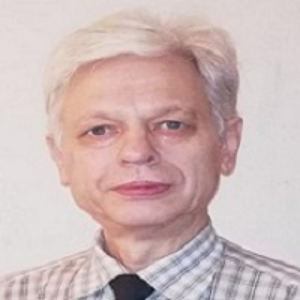Title : Influence of the sun on water. Explanation of "water memory" mystery
Abstract:
The variations of solar activity and distribution of solar energy due to the rotation of the Earth around its axis and around the Sun exert a strong influence on the self-organization of water molecules, on the size of water clusters and on their chemical reactivity. As a result, the rate of hydrolytic reactions with participation of water clusters displays diurnal, very large annual variations, and is also modulated by the 11-year cycles of solar activity. The rate of hydrolysis also depends on geographic latitude and has different values in the Northern and Southern hemispheres. In different years of the solar cycle, the difference in the reaction rate can reach 200 times. This phenomenon may be well accounted for by the decomposition of water clusters under the influence of muons which are constantly generated in the upper atmosphere by the solar wind. Since the muon flux is anisotropic, its influence depends on the area of a reaction solution which is affected by muons. For this reason, the reaction rate is highly dependent on the geometry of the reaction solution and its position in space. For example, the difference in the rate of hydrolysis of triethyl phosphite in three 5-mm NMR tubes directed North-South, East-West and Vertically can be very large and it varies greatly during the day depending on the position of the Sun in the sky.
The influence of the Sun on the stability of water clusters sheds light on the ability of water to memorize the structure of dissolved anti-LgE antibody and to retain its biological effectiveness after strong dilution. This mysterious phenomenon known as “water memory” is not always reproducible as it can only manifest itself under weak solar influence when water clusters are stable. Such periods often occur at the beginning and end of the 11-year cycle of solar activity, especially in winter away from the equator. We were able to experimentally prove that under weak solar influence, water can copy the sizes of its own clusters and other molecules.
The dependence of the self-organization of water molecules and the chemical reactivity of water clusters on fluctuations in solar activity has a strong influence on all forms of life. It underlies the biological circadian, circannual and 11-year rhythms, and also displays the connection with epidemics.
Audience Take Away Notes:
- Influence of the Sun on water has a strong influence on all forms of life. It sheds light on “water memory” mystery and displays the connection with epidemics.
- Measurements of the rate of hydrolysis of triethyl phosphite in different places can provide important information about the influence of space weather on the Earth.
- Hydrolysis of triethyl phosphite can be used to track changes in the direction of the muon flux.
- Near the Equator where there are no seasonal differences, such measurements may become an independent method for estimating solar activity.


